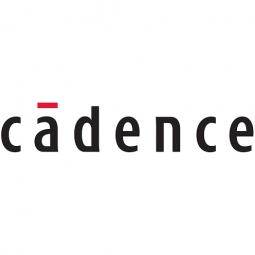Technology Category
- Analytics & Modeling - Digital Twin / Simulation
- Robots - Parallel Robots
Applicable Industries
- Automotive
- Electrical Grids
Applicable Functions
- Product Research & Development
- Quality Assurance
Use Cases
- Digital Twin
- Virtual Reality
Services
- System Integration
About The Customer
Fuji Electric (FE) is a global company based in Japan that supplies advanced, innovative power device and power modules. These products are designed to save energy while offering high performance, downsizing, and high reliability to the new energy, green Internet Data Center (IDC), and automotive markets. With the growth of new energy sectors, such as wind power and mega solar, FE’s large-capacity modules are gaining popularity. The company has a wide range of products with insulated gate bipolar transistor (IGBT) modules that include up to 3,300 volts for maximum rated voltage and up to 3,600 amps for maximum rated current. These high-speed IGBTs offer fast switching to enhance high-efficiency equipment.
The Challenge
Fuji Electric (FE), a global company based in Japan, was faced with the challenge of developing a new driver IC for its power modules and power ICs. The company needed a control function that could meet the specifications of a new power-management system. The design team had to explore a new control algorithm, including the design concept for the new power-management system. The IC would need to support many functions, such as a protection function to stop the system in case of unusual conditions, such as high or low voltage during a lightning storm. The aggressive time-to-market requirements for this new low-power, low-noise, low-cost power-supply IC added to the complexity of the task. The team also needed to increase the efficiency of the concept design and manage complex verification items.
The Solution
To improve the efficiency of its concept design, the FE design team decided to use Verilog-A for this project. They adopted Cadence® Virtuoso® Accelerated Parallel Simulator, part of Virtuoso Multi-Mode Simulation, to develop the driver IC for its power modules and power ICs. This simulator performs advanced, SPICE-accurate simulation for faster convergence on design goals while offering scalable performance and capacity. It’s tightly integrated with the Virtuoso Analog Design Environment, which enables FE engineers to capture and pass design intent in the same environment, and it provides all the transistor-level analysis capabilities of Virtuoso Spectre® Circuit Simulator. The simulator’s proprietary full-matrix–solving technology delivers unparalleled scalability and multithreading capability using modern multi-core compute platforms, ensuring precise simulation without sacrificing accuracy of results.
Operational Impact
Quantitative Benefit

Case Study missing?
Start adding your own!
Register with your work email and create a new case study profile for your business.
Related Case Studies.

Case Study
Integral Plant Maintenance
Mercedes-Benz and his partner GAZ chose Siemens to be its maintenance partner at a new engine plant in Yaroslavl, Russia. The new plant offers a capacity to manufacture diesel engines for the Russian market, for locally produced Sprinter Classic. In addition to engines for the local market, the Yaroslavl plant will also produce spare parts. Mercedes-Benz Russia and his partner needed a service partner in order to ensure the operation of these lines in a maintenance partnership arrangement. The challenges included coordinating the entire maintenance management operation, in particular inspections, corrective and predictive maintenance activities, and the optimizing spare parts management. Siemens developed a customized maintenance solution that includes all electronic and mechanical maintenance activities (Integral Plant Maintenance).

Case Study
Hydro One Leads the Way In Smart Meter Development
In 2010, Ontario’s energy board mandated that time-of-use (TOU) pricing for consumers be available for all consumers on a regulated price plan. To meet this requirement, Hydro One needed to quickly deploy a smart meter and intelligent communications network solution to meet the provincial government’s requirement at a low cost. The network needed to cover Hydro One’s expansive service territory, which has a land mass twice the size of Texas, and its customers live in a mix of urban, rural, and remote areas, some places only accessible by air, rail, boat or snowmobile. Most importantly, the network needed to enable future enterprise-wide business efficiencies, modernization of distribution infrastructure and enhanced customer service. To meet these needs, Hydro One conceptualized an end-to-end solution leveraging open standards and Internet Protocols (IP) at all communication levels. The utility drew upon industry leaders like Trilliant to realize this vision.

Case Study
Monitoring of Pressure Pumps in Automotive Industry
A large German/American producer of auto parts uses high-pressure pumps to deburr machined parts as a part of its production and quality check process. They decided to monitor these pumps to make sure they work properly and that they can see any indications leading to a potential failure before it affects their process.










